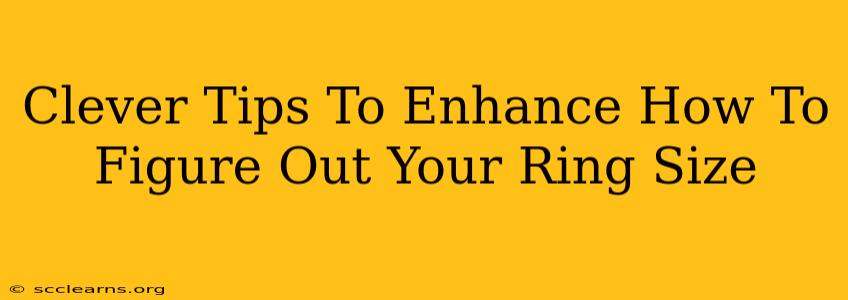Finding the perfect ring is exciting, but getting the size right is crucial! An ill-fitting ring can be uncomfortable and even frustrating. This guide offers clever tips and tricks to help you accurately determine your ring size, ensuring a perfect fit every time.
Traditional Methods: Accuracy and Alternatives
While online ring size charts are convenient, they aren't always perfectly accurate. Here's why and what to do instead:
Why Online Charts Fall Short:
- Variations in Ring Styles: Different ring styles (e.g., wide bands vs. thin bands) might slightly affect the perceived size.
- Material Differences: The metal's flexibility can impact the fit.
- Individual Finger Variations: Your fingers can swell throughout the day, varying sizes slightly depending on the time of day and activity.
Accurate Alternatives to Online Charts:
- Professional Measurement: The most accurate method is visiting a jeweler. They have specialized ring sizers and can provide expert advice.
- Ring Sizer Tool (At Home): Many jewelry stores sell inexpensive ring sizer tools. These are often more accurate than online guides.
- Using Existing Rings: If you already own a ring that fits well, you can use it to measure your size. However, this only works if you know the size of that ring.
Clever Techniques for Accurate Ring Size Determination:
The String Method:
- Wrap: Wrap a thin string or piece of floss snugly around the base of your finger where you plan to wear the ring.
- Mark: Mark the point where the string overlaps.
- Measure: Measure the string's length with a ruler.
- Convert: Use a ring size chart (available online) to convert the measurement to your ring size. Important Note: Ensure the chart you are using specifies the type of measurement it accepts (inches or centimeters).
Pro-Tip: Measure your finger at different times of the day (morning, afternoon, evening) to account for potential swelling. Use the largest measurement as your guide.
The Tracing Method:
- Trace: Trace the outline of a ring that fits well onto a piece of paper.
- Measure: Measure the inner diameter of the traced circle.
- Convert: Use a ring size chart to convert the diameter to your ring size.
Pro-Tip: For best results, use a sharp pencil and trace the ring's inner edge carefully.
Consider Your Lifestyle:
- Active Lifestyle: If you're very active, you might prefer a slightly smaller ring to prevent it from slipping off.
- Swelling: If you experience significant finger swelling, consider getting a slightly larger size.
Beyond the Size: Choosing the Right Fit
Knowing your ring size is only half the battle. Consider these factors:
- Ring Width: Wider bands can feel slightly tighter than narrower bands.
- Ring Material: Some metals are more flexible than others.
- Ring Style: Intricate designs might alter the perceived fit.
By utilizing these tips and tricks, you'll be well-equipped to determine your ring size and ensure a comfortable and perfect fit for your new ring. Remember, professional measurement is always the safest bet for the best results, especially for significant purchases.

